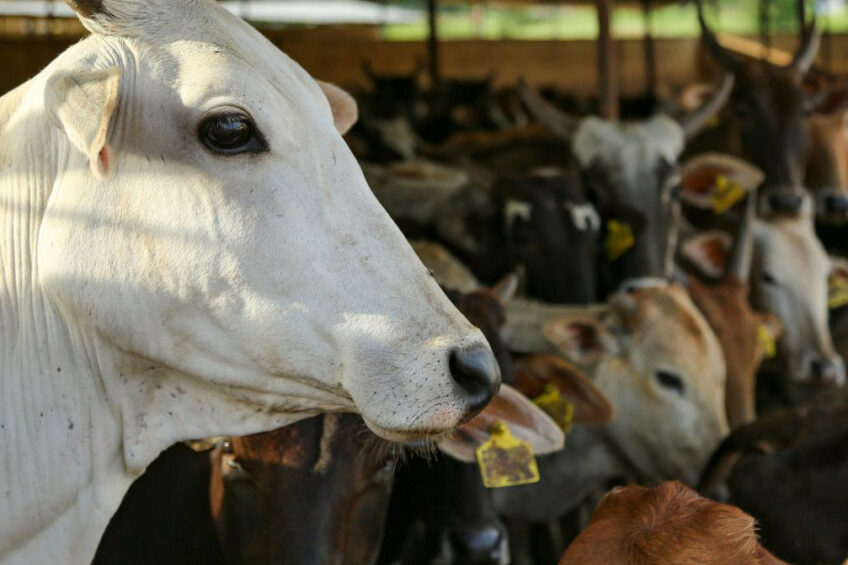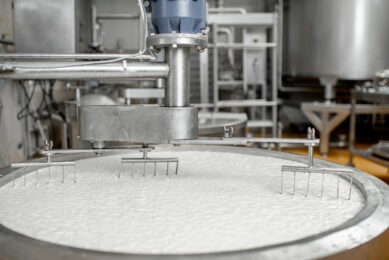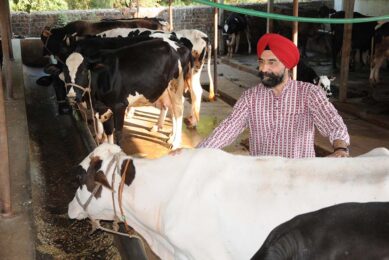India’s technological transformations for sustainable dairy

The Indian dairy industry employs millions of people and makes a significant contribution to the country’s GDP. According to a USDA GAIN report, milk production is expected to rise by 3% in 2024. However, the report highlights that production increases are falling short of their full potential. This article discusses the benefits of technological advancements for sustainable dairy production.
Reports show that India’s dairy industry has experienced significant technological advancements over recent years. These technological developments have brought numerous benefits to the industry, including increased efficiency, reduced production costs, improved quality control, and better animal health management.
With ‘sustainability’ as one of the hot topics of modern dairy production, adopting and implementing the relevant technologies in full will go a long way to promoting sustainable dairy production in India. In her recent research work, Dr Simmi Choyal highlights the impact of technological advancements on the Indian dairy industry; this work is detailed in a report published in the Journal of Emerging Technologies and Innovative Research.
Milk and milk products: Forecast for 2024
India consumes the bulk of its own milk and milk products, which is likely to continue for the foreseeable future. The October 2023 GAIN report forecasts MY 2024 (January-December) fluid milk production at 212.7 million metric tonnes (mmt) (up 3%), 0.8 mmt of non-fat dry milk (skimmed milk powder up 4%), and 6.9 mmt of butter (up 2%) compared to 2023 volumes.
Fluid milk consumption is forecast at 90 mmt (up 3%); non-fat dry milk is foreseen to come in at 0.7 mmt (up 1%) and butter at about 6.9 mmt (up 2%) compared to 2023 volumes. According to the report, these production increases are falling short of their full potential due to a combination of factors, including a shortage of quality feeds and fodders and a limited number of higher-yielding milk cows.
Technological advancement is one tool expected to drive the Indian dairy industry to its full potential, and help it achieve the industry’s sustainability goals.
Benefits of technological transformations
A recent analysis of the Indian dairy industry published in the Journal of Emerging Technologies and Innovative Research highlights the benefits to the industry of adopting technological advancements:
Automation of dairy operations
Automation of dairy operations has been a gamechanger for the Indian dairy industry: improving efficiency, reducing labour costs, and increasing productivity. Automating processes such as milking, feeding, and cleaning reduces manual labour. Using milking machines has improved milk quality and reduced the risk of contamination. Implementing computerised feeding systems and advanced cooling systems has reduced food and water waste, which has resulted in higher profits for dairy farmers. Similarly, advanced technologies such as ultra-high-temperature (UHT) treatment, membrane filtration, and aseptic packaging have made it possible to produce high-quality dairy products with a longer shelf-life. This has increased profitability for dairy farmers and improved availability of high-quality dairy products for consumers.
Adoption of precision farming
In the dairy industry, precision farming has been used to grow higher quality feed for cattle, resulting in improved milk quality and increased milk yield. By adopting precision farming techniques, farmers can also reduce water and fertiliser usage, contributing to a more sustainable and eco-friendlier dairy industry. Using precision technology-based disease alert systems and lameness detection technologies also helps improve animal health and well-being. Similarly, using artificial insemination and embryo transfer technologies has revolutionised cattle breeding, enabling farmers to generate better cow breeds which are more resistant to diseases, produce more milk, and are better suited to local climatic conditions. Deploying GPS-enabled vehicles and advanced tracking systems such as blockchain technology improves supply chain efficiency, reduces waste, and ensures timely product delivery.
Advancing methodologies
Conducting a sustainability assessment of the entire farm is a valuable approach to identify factors and mechanisms that could improve the 3 pillars of sustainability: economic profitability, social well-being, and environmental impacts of dairy production. In their research published in the Sustainability journal, researchers from the National Institute of Technology Patna propose assessing dairy sustainability performance using four pillars (environment, social, economic, and business operations) instead of the commonly used three pillars.
“Including a business operation framework provides an in-depth assessment of sustainability in each context,” they said. According to the researchers, the business operations pillar includes measuring business and operations effectiveness, responsiveness to customer demand, technology and capacity utilisation rates. The researchers highlighted that a focus beyond the 3 pillars of sustainability would improve sustainability performance assessment in the dairy industry.
They also emphasised the importance of using suitable techniques for a sustainable performance assessment framework model; they proposed a model that utilises integrated multi-criteria decision-making techniques such as Delphi, F-AHP, and F-VIKOR.
Major dairy market players
Cooperative dairy organisations have a significant influence on the Indian dairy industry’s growth. These organisations collect, process and market milk and milk products, providing farmers with a reliable market and fair prices.
Below are some of the key players in the Indian dairy products market:
- Amul is one of the largest dairy cooperatives in India and a well-known brand. It offers a wide range of dairy products and has a strong distribution network and market presence across the country.
- Mother Dairy is a subsidiary of the National Dairy Development Board and is known for its quality products and a strong market presence in India’s northern and eastern regions.
- Britannia Industries Limited is a well-established fast-moving consumer goods company in India with dairy products widely available across the country.
- Dudhsagar Dairy, which was incorporated in 1963, offers dairy products marketed under the brand names Amul, Sagar and Dudhsagar in national and international markets.
- Nestlé India is a global food and beverage company with a strong presence in the Indian dairy products market.
- Parag Milk Foods Ltd has a strong presence in domestic and international markets.
- Hatsun Agro Product Ltd has a wide distribution network and a strong presence in southern India.
- Verka is a well-known dairy brand in Punjab and other northern regions of India.
- Nandini (Karnataka Milk Federation) is reported as the second-largest dairy cooperative in the country.
Technology adoption challenges
As the Indian dairy industry continues to grow, it is essential to embrace technological advancements to ensure sustained growth and development. However, the industry still faces several challenges, including the lack of access to advanced technologies, inadequate infrastructure, and lack of knowledge on how to use the technologies effectively. To fully realise the benefits of technological advancements, policymakers and industry stakeholders must work together to address these challenges and create a more favourable environment for the Indian dairy industry to grow and develop.










